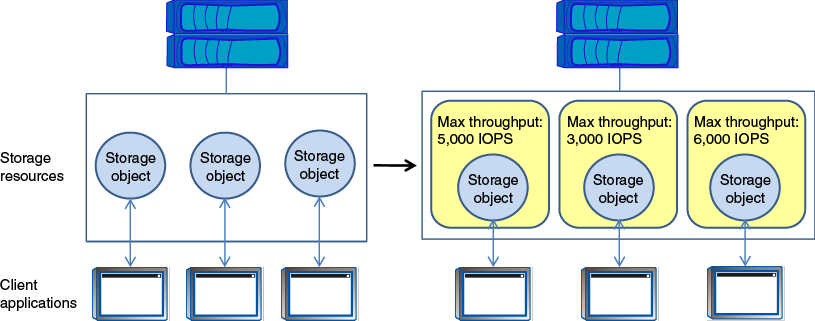How Storage QoS works
Storage QoS controls workloads that are assigned to policy groups by throttling and prioritizing client operations (SAN and NAS data requests) and system operations.
The following illustration shows a sample environment before and after using Storage QoS. On the left, workloads compete for cluster resources to transmit I/O. These workloads get best effort
performance, which means that you have less performance predictability (for example, a workload might get such good performance that it negatively impacts other workloads). On the right, the same workloads are assigned to policy groups that enforce maximum throughput limits.

The -max-throughput parameter specifies the maximum throughput limit for the policy group that the policy group must not exceed. The value of this parameter is specified in terms of IOPS or MB/s, or a combination of comma-separated IOPS and MB/s values, and the range is zero to infinity.
The units are base 10. There should be no space between the number and the unit. The default value for the -max-throughput parameter is infinity , which is specified by the special value INF.
The keyword none
is available for a situation that requires the removal of a value. The keyword INF
is available for a situation that requires the maximum available value to be specified. Examples of valid throughput specifications are: "100B/s
", 10KB/s
, 1gb/s
, 500MB/s
, 1tb/s
, 100iops
, 100iops,400KB/s
, and 800KB/s,100iops
.